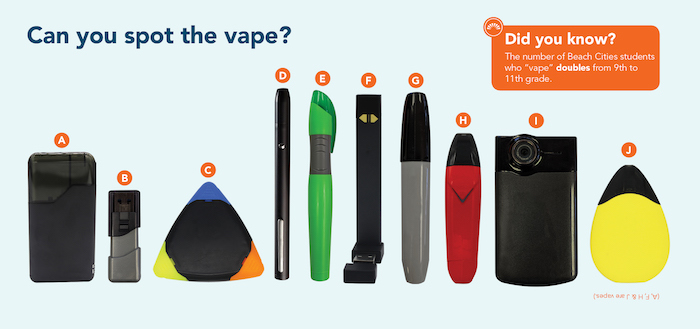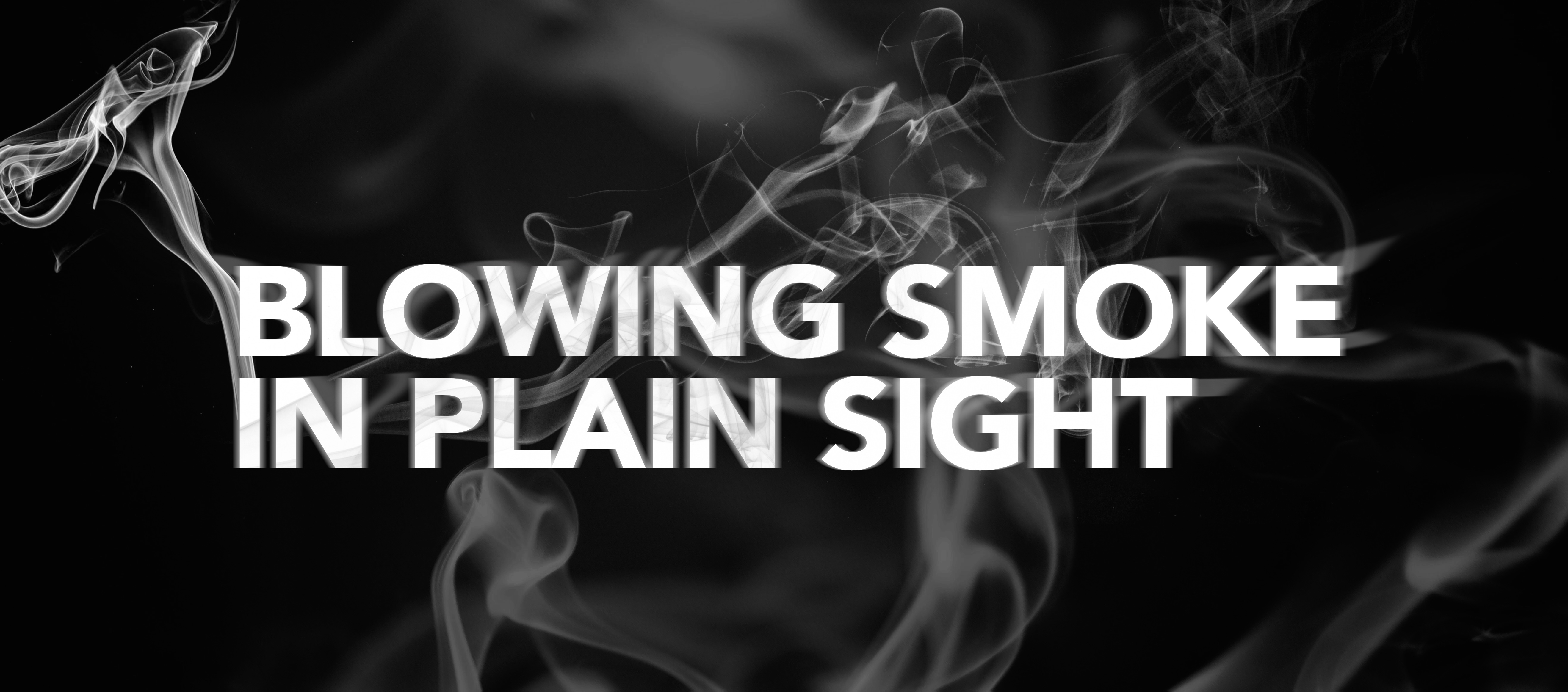JUUL. Emili. Suorin. These are just a few of the new nicotine-packed e-cigarette devices that are finding their way into the hands of middle and high school students in the Beach Cities. Electronic-cigarettes, commonly called “vapes,” have rapidly become the most popular tobacco product among youth in the past few years. An alarming 28 percent of Beach Cities 11th graders and 14 percent of 9th graders report vaping in the past 30 days. And 84 percent say it is “easy” to obtain them. Fueling this growth is the myth – among many teens and adults – that vaping isn’t harmful. This is far from fact. Vapes contain high concentrations of nicotine – the same habit-forming neurotoxin in cigarettes – as well as an assortment of cancer-causing chemicals and heavy metals like formaldehyde, lead and acetaldehyde. Further complicating matters is the fact that tobacco companies are designing vapes to resemble everyday school supplies like pens, highlighters and thumb drives. This helps kids vape in plain sight, in places like movie theaters and at home. There is also a buffet of flavored “vape juices” flooding the market, many with youthful names like “V’Nilla Cookies & Milk,” “Apple Candy,” “Bubblegum,” “Sticky Buns,” “Banana Dream.” On top of enticing underage clientele – the FDA banned flavored cigarettes (other than menthol) in 2009 citing youth appeal – flavors also make the vapor emitted very difficult to detect as kids covertly exhale into their hoodies, sleeves or backpacks. Vaping is a serious and growing youth health issue hiding in plain sight. It’s time we Talk About It. Learn more at bchd.org/talk.

California Healthy Kids Survey, 2017-18 Centers for Disease Control and Prevention, Electronic Cigarettes




